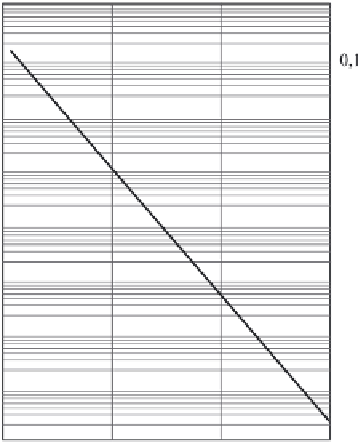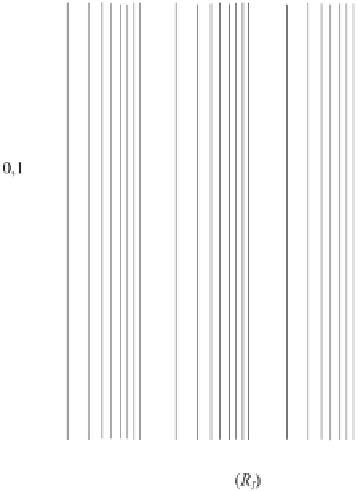Geoscience Reference
In-Depth Information
Estimates made by specialists reveal that several thousand large objects (asteroids
and comets) of diameters over 1 km have a potential possibility of colliding with
our planet [Solem (1999)]. A cosmic body of size superior to 2 km colliding with
the Earth will result in a global catastrophe [Paine (1999)]. Luckily, the probability
of such a collision is extremely small, and in all written history of the existence
of mankind no such catastrophe occurred. Objects of relatively small dimensions
regularly bombard the Earth, but most of them are destroyed and already burn up
in the upper layers of the atmosphere. The critical for a stony meteor body size,
with which it is capable of reaching the Earth's surface, amounts to about 100 m in
diameter. In the case of iron objects this critical size is significantly smaller (
∼
1m),
but they are encountered very rarely, so they will not be dealt with.
From Fig. 4.13 one can judge the collision probability of a celestial body with
the Earth depending on the radius of the object. This dependence has been ob-
tained in [Ward, Asphaug (2000)]. Actually, it represents a straight line (in loga-
rithmic scale) that passes through the two points indicated in the figure by stars.
The first point is based on existing material—observations from geostationary satel-
lites of meteor bodies with dimensions
1 m exploding in the atmosphere. These
data permit to assert that on the average about 25 events of this kind take place
in a year [Nemtchinov et al. (1997)]. The second point is based on estimations
of the collision frequency of the Earth with large objects (
∼
∼
1 km), made in refs.
At
Wi
(m)
Ra
Fig. 4.13 Number of asteroids colliding with the Earth per year versus their radius. Dotted line—
number of objects reaching the Earth's surface (with account of losses in the atmosphere). Stars
show the results of [Nemtchinov et al. (1997); Shoemaker et al. (1990)]. Adapted from [Ward,
Asphaug (2000)]






















































